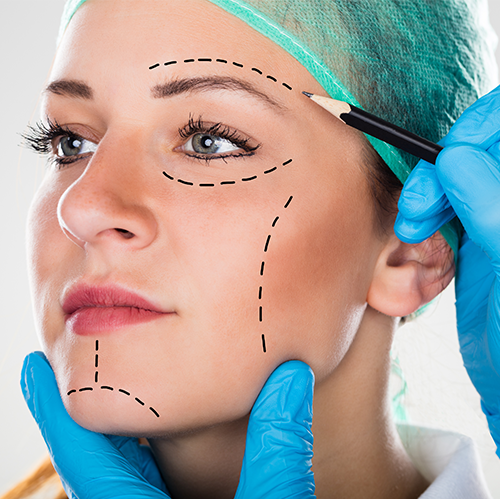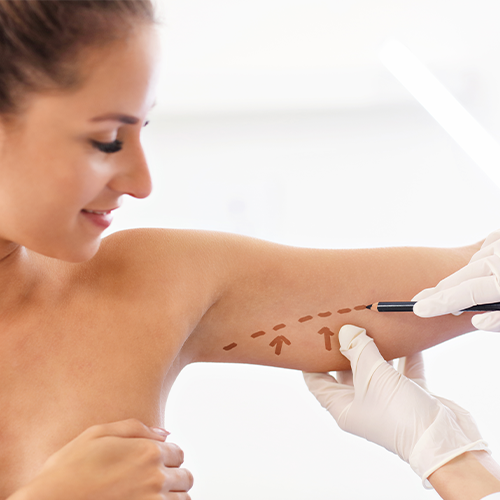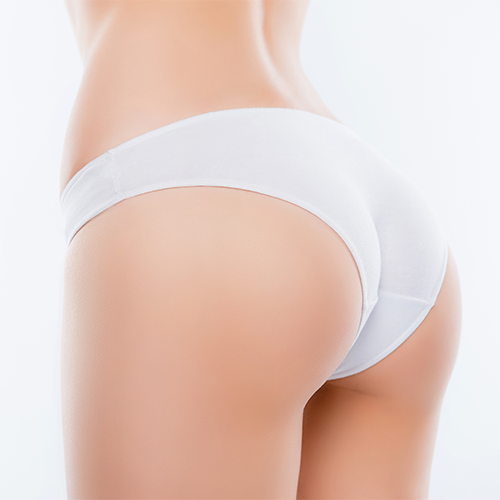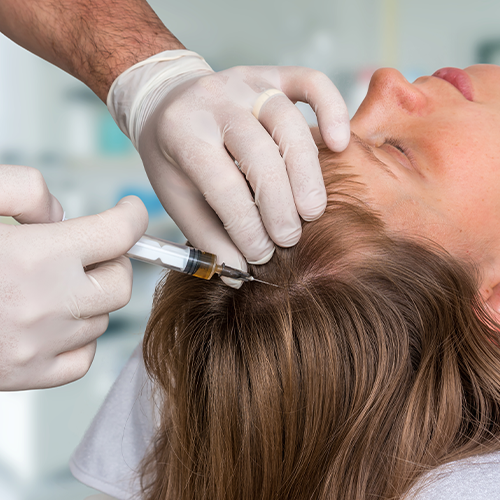
Facial surgery is the general name given to cosmetic operations performed in the face, neck and décolleté area. As the person ages, one of the most discomforting issues is the loss of collagen and volume in the face area, resulting in a drooping and wrinkled appearance on the face. Facial surgery, which is one of the most performed operations in the plastic surgery field, is to remove the excess of the loose or sagging facial skin of the patient and to give a younger appearance. This operation is performed in order to gain a more youthful and lively appearance, as the face area, which is one of the most striking areas, sagging, wrinkles are formed, and the oval shape of the face is deteriorated due to age over time.
 Operations that can be done on and around the face are:
Operations that can be done on and around the face are:
- Fat injections
- Face lifting
- Eye area surgery
- Dimple surgery
- Brow lifting
- Double-chin surgery
- Cheek surgery
- Otoplasty (ear correction)
- Eyelid surgery
- Lips surgery
- Rhinoplasty (Nose surgery)
- Neck lifting
- Forehead lifting and/or reduction
- Hair transplant
Face Lifting surgery, or known as rhytidectomy, is a plastic medical surgery method intended to restore the facial appearance and lessen the indications of maturing on the face and on the neck areas.
Face-lift can achieve the accompanying:
- Decrease drooping that exists in the mid-face area.
- Get rid of wrinkles under the bottom eyelids.
- Improve the lines on the both sides of the nose and corners of the mouth.
- Reallocate the fat tissue.
- Eliminate the saggy skin and fatty tissue under the jawline and chin.
- Rearrangement of the tissues and muscles under the skin.
- Improve the presence of unattractive double-chin.
- Renew the facial appearance and add youthness back to the face.
Additionally, face-lift can assist with reestablishing self-confidence by recuperating the young and fresh appearance of your facial features. A definitive objective of rhytidectomy is to have a gleaming skin that looks and feels more youthful and supple. The best aftereffect of facelift is the goal at which you look and feel naturally freshened up and renewed. You can find this solutions in Orenda Health with provided high quality techniques.
When we love the image we see when we look in the mirror, it’s an amazing feeling that makes us so happy and confident that nothing can compete with it. And knowing the aging process will be on our side, to make it more graceful.
Facelifting is one of the numerous restorative medical procedure therapies promising an extraordinary outcome to the patients who are hoping to travel back in time on their facial appearance-and age with self-confidence and elegance.
Great applicants of cosmetic touch up for Facelifting
Ideal applicants for a cosmetic touch up procedure for facelifting covers any healthy people looking out to get rid of saggy, loose skin along the lower area of the face and the upper area of the neck. Patients who have irritating and uncomfortable double-chin along the jawline can also benefit from the face lifting surgery.
Facelifting operation after losing Weight
Patients usually don’t pay attention to face lifting procedure with regards to weight loss. While tummy tuck or thigh lifting are generally used after losing weight, facelifting can also be performed to lessen the saggy skin around the fatty areas to assist a whole better-looking appearance around jawline and neck.
All things considered, not every person who has weight loss is essentially a decent candidate for facelifting. Normally, patients who lose in excess of 100 pounds (45kg) are probably going to have sufficient additional skin around the face and neck to profit from a face lifting operation.
Furthermore, your body weight ought to have balanced itself out for a considerable length of time prior to going through the procedure to avoid the repetition in case that you gain and lose more weight again. Your wellbeing also is crucial to qualify if you’re fit for a face lifting operation after losing weight.
Preferably, an ideal candidate for facelifting ought not have major or persistent chronic disorders, like hypertension or diabetes. Having a solid eating regimen that is wealthy in nutritious food sources, for example, vegetables, natural products, fruits and whole grains and protein can assist you with guaranteeing that you have the most ideal outcomes.
Procedures of Rhytidectomy
There are different rhytidectomy medical procedure strategies and the outcomes change enormously relying upon the strategy and the plastic surgeon.
Non-surgical Facelifting Methods
If the patient does not prefer to undergo a full face operation, non-surgical methods can be applied such as, fillers (injections), mesotherapy, salmon DNA therapy, or collagen therapy to increase the elasticity of the skin and to give volume. If the face has significant sagging and excess skin, thread-lifting can be applied with minimal incision. On the non-surgical methods, the patient can go back to normal social life more quickly and postoperative edema and swelling will not occur or will be experienced for a very short time.
There are many procedures that will make the face look tighter and younger without surgery. These methods can be applied with devices or needles. The most well-known of the non-surgical facelift procedures applied with the device are Focus Ultrasound and Thermage. Methods applied with needles are procedures such as Botox, fillings and mesotherapy. Apart from these procedures, there are also face lift procedures with a thread. These procedures vary according to the skin structure, age and needs of the patient.
Thread (string) Facelifting
On the off chance that you might want to stay away from the nip and tuck of the medical procedure with surgical blade and still want to reestablish a younger appearance, thread facelift might be the best choice for you. A string facelift is a non-surgical, significantly unobtrusive corrective medical procedure that uses unique stitch strings to lift up hanging skin on the neck and face area. String facelift is a less obtrusive option in contrast to a conventional face lifting operation. The treatment is less tedious and takes so much less from your personal time.
Surgical Face Lifting Methods
Mini facelift
A mini facelift, or mini rhytidectomy, is performed by using shorter incisions than a broadly known traditional cosmetic surgery. The aim in mini face lifting is to reduce and correct the small signs of aging around the jawline, cheeks, neck and chin, without going too far into the deep tissue to achieve a more natural youthful look with minimal scarring. Loose tissue is removed from the front of the ear, the inner tissue is tightened. The target group is between 35-45 ages. The operation is performed under general anesthesia, the average operation time is 2 hours.
Mid-face lifting Operations
The targeted area is the sagging cheek tissue under the eyes that forms the baggy eyes and puffiness. It can be done with an incision made under the eye; and can also be done endoscopically (camera system) by entering through the scalp near the hairline. It is generally suitable for middle-aged patients aged 40-55 years. The operation is performed under general anesthesia, the average operation time is 2 hours.
Lower Facelift
Lower part of the face is aimed in this type of face lifting operation. Deep wrinkles, sagging cheeks, double chin and loose skin around the neck are targeted areas. It is exclusively designed to sculpt a more prominent and defined jawline and the procedure can be combined with non-surgical treatments such as BOTOX and dermal fillers to complement the whole facial appearance.
Full Face Lift Operations
In full face lifting operations, with an incision made from the edge of the scalp, starting in front of the ear; both mini face lift and mid face lift operation are performed at the same time. In the operation, the entire cheek area is opened and the deeper tissue is intervened, both the cheek area and the lower face area of the patient are lifted and excess skin is removed. Full face lift operations are suitable for older skin structures and are applied to patients aged 55-60 on average. The operation is performed under general anesthesia; the average operation time is 2-3 hours.
Recovery after Facelifting Operations
In order to minimize bruising and swelling, after the procedure, the face will be loosely bandaged to protect the affected areas. If the operation needs to contain drainage tubes, they will be placed in the area to be removed the next day, after carefully washing the hair. On the sixth day after the operation, the stitches are removed and the existing edema on the face begins to pass. In the following weeks you may experience numbness, change of color and slight pain around the areas that were affected due to the healing process. For the full-face lifting operations, it takes about 4-6 months for the skin to fully fit on the face. Patients who have undergone a facelift operation should use a face corset for a minimum of 2 weeks after the operation. Most of the patients can go back to work within 10 days. Due to discoloration on the operated areas, you can benefit from the color-corrector makeup, foundation and concealers if you would like to. Post-surgical recovery tips and medication will be provided to you by the surgeons to ease the pain and get back to normal daily life again.

 Average length of stay
Average length of stay Length of stay in hospital
Length of stay in hospital Operation duration
Operation duration Anesthesia
Anesthesia Recovery Duration
Recovery Duration




